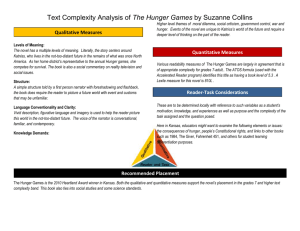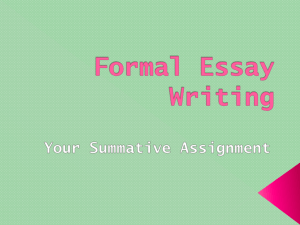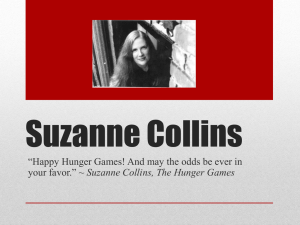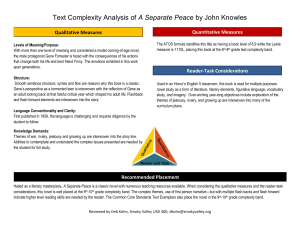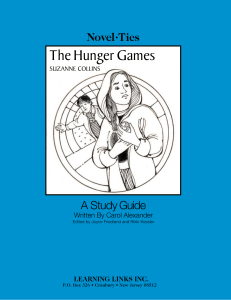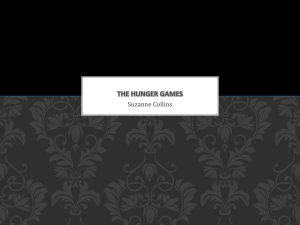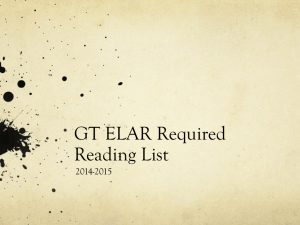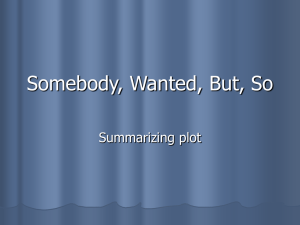The Hunger Games
advertisement
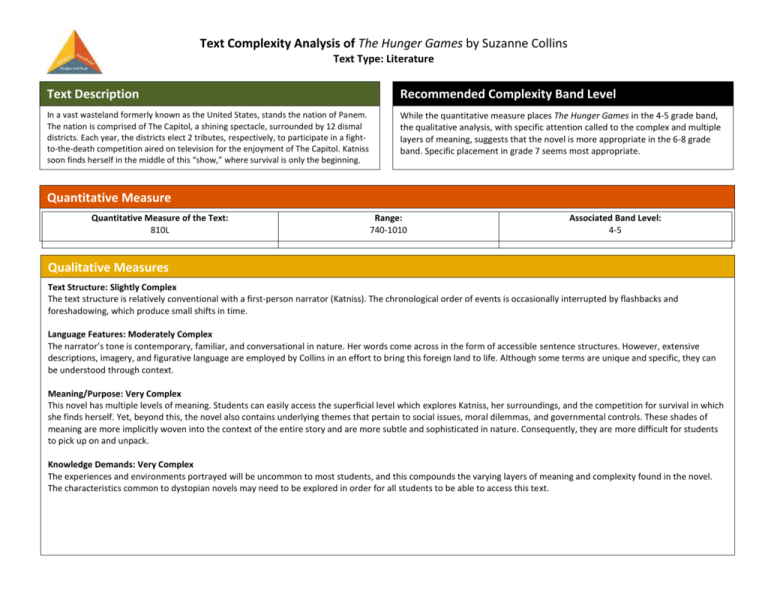
Text Complexity Analysis of The Hunger Games by Suzanne Collins Text Type: Literature Text Description Recommended Complexity Band Level In a vast wasteland formerly known as the United States, stands the nation of Panem. The nation is comprised of The Capitol, a shining spectacle, surrounded by 12 dismal districts. Each year, the districts elect 2 tributes, respectively, to participate in a fightto-the-death competition aired on television for the enjoyment of The Capitol. Katniss soon finds herself in the middle of this “show,” where survival is only the beginning. While the quantitative measure places The Hunger Games in the 4-5 grade band, the qualitative analysis, with specific attention called to the complex and multiple layers of meaning, suggests that the novel is more appropriate in the 6-8 grade band. Specific placement in grade 7 seems most appropriate. Quantitative Measure Quantitative Measure of the Text: 810L Range: 740-1010 Associated Band Level: 4-5 Qualitative Measures Text Structure: Slightly Complex The text structure is relatively conventional with a first-person narrator (Katniss). The chronological order of events is occasionally interrupted by flashbacks and foreshadowing, which produce small shifts in time. Language Features: Moderately Complex The narrator’s tone is contemporary, familiar, and conversational in nature. Her words come across in the form of accessible sentence structures. However, extensive descriptions, imagery, and figurative language are employed by Collins in an effort to bring this foreign land to life. Although some terms are unique and specific, they can be understood through context. Meaning/Purpose: Very Complex This novel has multiple levels of meaning. Students can easily access the superficial level which explores Katniss, her surroundings, and the competition for survival in which she finds herself. Yet, beyond this, the novel also contains underlying themes that pertain to social issues, moral dilemmas, and governmental controls. These shades of meaning are more implicitly woven into the context of the entire story and are more subtle and sophisticated in nature. Consequently, they are more difficult for students to pick up on and unpack. Knowledge Demands: Very Complex The experiences and environments portrayed will be uncommon to most students, and this compounds the varying layers of meaning and complexity found in the novel. The characteristics common to dystopian novels may need to be explored in order for all students to be able to access this text. Text Complexity Analysis of The Hunger Games by Suzanne Collins Text Type: Literature Considerations for Reader and Task Possible Major Instructional Areas of Focus (include 3-4 CCS Standards) for this Text: Below are factors to consider with respect to the reader and task: Potential Challenges this Text Poses: RL.7.2 - Determine the theme or central idea of a text and analyze its development over the course of the text; provide an objective summary of the text. Provide students with specific themes to trace over the course of the entire novel. Model as necessary. RL.7.3 - Analyze how particular elements of a story or drama interact (e.g., how setting shapes the characters or plot). Focus on the ways in which Katniss’ surroundings and past experiences contribute to and shape her character’s thoughts, words, and actions. RL.7.7 - Compare and contrast a written story, drama, or poem to its audio, filmed, staged, or multimedia version, analyzing the effects of techniques unique to each medium (e.g., lighting, sound, color, or camera focus and angles in a film). View salient portions of the film to see what film techniques were used to achieve certain effects not possible in writing. L.7.5 - Demonstrate understanding of figurative language, word relationships, and nuances in word meanings. Study Collins’ use of description and figurative language to better understand the ways in which she is able to create a foreign yet tangible new world. Some students may struggle with grasping the underlying political and social commentary. The dystopian genre may prove difficult, as well. Differentiation/Supports for Students: Give additional background knowledge regarding dystopian novels in order to enhance students’ understanding. Provide students with specific underlying themes to look for while reading and model how to analyze them [the themes] once they can identify them. Using textdependent questions in order to walk students through this process may be helpful. For learning extension: Consider linking to certain history/social studies standards, such as RH.68.6: Identify aspects of a text that reveal an author’s point of view or purpose (e.g., loaded language, inclusion or avoidance of particular facts). Reading this novel as a part of a text set that includes other texts that explore similar issues. Some examples of novels include the following. Using excerpts (rather than the novels in their entireties) may be necessary. o The Giver o Animal Farm o 1984 o Feed o Fahrenheit 451 o Lord of the Flies
